![Coleman, Steve & Five Elements: PolyTropos / Of Many Turns [2 CDs] (Pi Recordings) Coleman, Steve & Five Elements: PolyTropos / Of Many Turns [2 CDs] (Pi Recordings)](https://www.teuthida.com/productImages/misc4/35476.jpg)
Drawn from two absolutely energetic and exciting concerts in France, saxophonist and composer Steve Coleman's Five Elements ensemble — Jonathan Finlayson on trumpet, Sean Rickman on drums, and new electric bassist Rich Brown — blend spontaneous rhythmic and tonal transformations with Coleman's inventive, biologically-inspired compositions; exhilarating!
In Stock
Quantity in Basket: None
Log In to use our Wish List
Shipping Weight: 3.00 units
EU & UK Customers:
Discogs.com can handle your VAT payments
So please order through Discogs
Sample The Album:
Steve Coleman-alto saxophone
Jonathan Finlayson-trumpet
Rich Brown-bass
Sean Rickman-drums
Click an artist name above to see in-stock items for that artist.
UPC: 808713010527
Label: Pi Recordings
Catalog ID: Pi 105
Squidco Product Code: 35476
Format: CD
Condition: New
Released: 2024
Country: USA
Packaging: Cardboard Gatefold 3 Panels
CD1 recorded live at New Morning, in Paris, France, on March 12th, 2024, by Sylvain Pierre-Justin abd Bernat Lloret.
CD2 recorded live at Salle des fetes de Voiron, in Voiron, France, on March 16th, 2024, by Guillaume Champion and Guillaume Presle .
"PolyTropos / Of Many Turns is the highly-anticipated new release from influential alto saxophonist / composer Steve Coleman. Comprised of two sets recorded live during a March, 2024 tour in France, it features his band Five Elements, with long-running partners Jonathan Finlayson on trumpet and Sean Rickman on drums, with new addition Rich Brown on bass. Popmatters said of his prior release, 2021's Live at the Village Vanguard, Volume II (Mdw Ntr): "The tides of his creativity continue to swell, change, surge... It is, actually, a refraction of culture and tradition that includes James Brown and Public Enemy, Jimi Hendrix and Duke Ellington, and Louis Armstrong.... It is art infused with all that information, and it challenges us simultaneously."
Since his 2018 release Live at the Village Vanguard, Vol. I (The Embedded Sets), Coleman has focused on releasing live recordings, which he believes to be the only true representation of the risk-taking nature of his music. These two sets, recorded in Paris and Voiron, France, document the continued refinement of the inimitable Five Elements musical lingo. It's a free-flowing music that mixes predetermined and spontaneous figures and compositions into continuous movements characterized by swift twists and turns that depends completely on a constant, extrasensory level of communication gained from thousands of hours of collective performance. The collaboration is democratic, with every instrument simultaneously contributing rhythmically and tonally. Their unique interaction is facilitated by their unusual stage arrangement in a semicircle, which - much like a drum circle - allows for eye contact and other unspoken cues that can instantaneously redirect the music in a completely different direction. The music is mostly played in long, staccato lines, furthering the impression that each instrument is a pitched drum, reinforcing the notion that this is unmistakably music born from the African diaspora.
Throughout his almost half-century long career, Coleman has drawn inspiration from concepts outside of music. For example, on his various Pi releases he has found musical insight from Ifá, the Yoruba divination system (The Mancy of Sound), the human heartbeat (Functional Arrhythmias), human joints (Synovial Joints), boxing moves (Morphogenesis), and ancient Egyptian hieroglyphs (the two Live at the Village Vanguard sets). More recently, Coleman has studied the structural chains of amino acid molecules, inventively using them as blueprints for making melodic and rhythmic connections. According to Coleman: "Amino acid synthesis can occur in a variety of ways, so in my musical re-imagining of the biochemical reactions, the melodic cells are formed through many different pathways, or 'of many turns' based on these patterns. The music could be called polytonal, in that intervals continuously bond in specific ways to form various tonal molecules, which take the place of traditional harmonies." These new compositions are often distilled down to short phrases that are interwoven with existing compositions and improvisation into the group's spontaneous interplay. The music has long-ago moved away from the stilted head-solo-head format into a free-flowing, highly sophisticated conversation guided by a complex system of call and response that magically creates form and structure on the fly. The band's virtuosity is astounding, with Brown and Rickman providing an endless groove, deceptive with its constant changes in color and rhythmic variation. Coleman and Finlayson banter back and forth with agreements and disagreements, interjections and exclamations.
The Greek words PolyTropos (πολuτροπον), which means "many" or "multiple" and "turns," is famously used by Homer to describe Odysseus in the first sentence of the Odyssey. Its meaning in that context has been widely debated, ranging from "much-traveled," "complicated," "multi-layered," and "of many ways." Each of these definitions can be used to aptly describe Coleman and his music. Matt Mitchell who recently performed with the band at The Stone in New York said of his experience: "No matter how much a musician has listened to Five Elements, and no matter how much advance notice a musician might have for a Five Elements gig, little can prepare one for the experience of performing with an improvising band that has 25-plus years of experience playing together. Hair-trigger cues can send the band off into a spontaneous arrangement of a piece that has mutated to a state nearly unrecognizable from the original recording. Setlists are rarely made or discussed. New music is presented that builds upon and extends the base concepts. Completely spur-of-the-moment compositions can emerge on any given night, soon to be merged with an older piece or never to be heard again. It's an ever-expanding network of spontaneous concepts, continually expanding and mutating." Acting on their collective, mysterious whim, the band takes the audience through exhilarating pivots and swerves based on some secret, enigmatic internal logic. It is collective improvisation of the highest order."-Pi Recordings
Artist Biographies
• Show Bio for Steve Coleman "Steve began playing music just days before his 14th birthday as a freshman at South Shore High School on the south side of Chicago. His first instrument was violin but later that year he switched to the alto saxophone. For three years Steve studied the basics of music and saxophone technique, then he decided that he wanted to learn how to improvise. Looking for the best improvising musicians to listen to is what brought Steve to the music of Charlie Parker, although it helped that his father listened to Parker all the time. After spending two years at Illinois Wesleyan University Steve transferred to Roosevelt University (Chicago Music College) in downtown Chicago in order to concentrate on Chicago's musical nightlife. Specifically Coleman had been introduced to the improvisations of Chicago premier saxophonists Von Freeman, Bunky Green, Gido Sinclair, Sonny Greer and others and he wanted to hang out and learn from these veterans. By the time he left Chicago in May 1978, he was holding down a decent gig leading a band at the New Apartment Lounge, writing music, playing Parker classics, and getting increasingly dissatisfied with what he felt was a creative dead end in the Chicago scene. After hearing groups from New York led by masters like Max Roach, Art Blakey, Woody Shaw, The Thad Jones-Mel Lewis Orchestra, Sonny Rollins, etc. come through Chicago with bands that featured great players with advanced musical conceptions, Steve knew where he wanted to go next. He felt he needed to be around this kind of atmosphere in order to grow musically. Hitchhiking to New York and staying at a YMCA in Manhattan for a few months, he scuffled until he picked up a gig with the Thad Jones-Mel Lewis Big Band, which led to stints with the Sam Rivers Big Band, Cecil Taylor's Big Band and others. Soon he began cutting records as a sideman with those leaders as well as pivotal figures like David Murray, Doug Hammond, Dave Holland, Mike Brecker and Abbey Lincoln. However it was really the influence of Von Freeman and Bunky Green in Chicago, Thad Jones, Sam Rivers, Doug Hammond in New York and listening to recordings of past improvising masters and music from West Africa that got Coleman turned around musically. . The most important influences on his music during this time were listening to tenor saxophonist Von Freeman (who primarily influenced Coleman as an improviser), saxophonist Sam Rivers (who influenced Steve compositionally) and drummer/composer Doug Hammond (who was especially important in Steve's conceptual thinking). Even playing with these masters only went part of the way toward paying the rent, and so for the next four years Coleman spent a good deal of time playing in New York City's streets for small amounts of money with a street band that he put together with trumpeter Graham Haynes, the group that would evolve into the ensemble Steve Coleman and Five Elements. It is this group that would serve as the flagship ensemble for most of Steve's activities. Within a short time the group began finding a niche in tiny, out-of-the-way clubs in Harlem and Brooklyn where they continued to hone their developing concept of improvisation within nested looping structures. These were ideas based on how to create music from one's experiences, which became the foundation which Coleman and friends call the M-Base concept. However, unlike what most critics wrote this concept was philosophical, Coleman did not call the music itself M-Base. After reaching an agreement with the West German JMT label in 1985, Steve and his colleagues got their chance to document their emergent ideas on three early Coleman-led recordings like Motherland Pulse, On The Edge Of Tomorrow, and World Expansion. The late 1980s found Coleman working to codify his early ideas using the group Steve Coleman and Five Elements and working with a collective of musicians called the M-Base Collective. As his ideas grew Steve also learned to incorporate various forms of research to expand his awareness, these techniques included learning to program computers to be used as tools to further develop his conception. He developed computer software that he referred to as The Improviser, which was able to spontaneously develop improvisations, harmonic structures and drum rhythms using artificial intelligence based on certain musical theories that Steve had developed over the years. It was also during this time that Coleman came into contact with the study of the philosophy of ancient cultures. This began in the late 1970s with his listening to music from West Africa and studying about he African Diaspora, but in the 1980s Steve began to study and read about the ideas behind the music. He began to see that there was a sensibility that connected what he was interested in today with the ancient cultures of the past. All of these ideas are documented on his recordings in the form of a sonic symbolic language. These emerging concepts were documented on Steve's subsequent albums Sine Die (recorded 1987-88 on the Pangaea Label), Rhythm People (1990), Black Science (1990), Drop Kick (1992), The Tao of Mad Phat (1993), and the first album of the entire M-Base Collective called Anatomy of a Groove (1991-1992); all except Sine Die on BMG Records. These recordings were the beginning of what Steve considers to be the transition to his mature period (1987-1990). However, not being satisfied with reading and listening to recordings, Coleman embarked on the first of many research trips, first going to Ghana in December 1993 to January 1994 to study the relationship of language to music. One of the places that he traveled to was a small village called Yendi to check out the Dagbon people who have a tradition of speaking through their music using a drum language that still survives today. Steve had certain ideas about the role of music and the transmission of information in ancient times and he wanted to verify his speculations. This trip had a profound effect on Coleman's music and philosophy. Upon returning to the United States Steve recorded Def Trance Beat and A Tale of 3 Cities on BMG Records, however the impact of the ideas that he was introduced to in Ghana would not be fully expressed in his work until late in 1994 after meeting the Kemetic (i.e. related to ancient Egypt) philosopher Thomas Goodwin, whose influence on Steve's work was profound and far reaching. In June 1994 Steve formed the group Renegade Way, at that time consisting of Steve Coleman and Greg Osby on alto saxophones, Joe Lovano and Craig Handy on tenor saxophones, Kenny Davis on bass and Yoron Israel on drums. This group also did its first tour of Europe in late august 1995 (with Bunky Green on alto taking Greg's place and Ralph Peterson on drums instead of Yoron). A later version of this group consisted of Steve Coleman and Greg Osby on alto saxophones, Gary Thomas and Ravi Coltrane on tenor saxophones, Anthony Tidd on Bass and Sean Rickman on drums, however this group has never recorded a commercially released CD. Representing both a summation of the previous period and the beginning of another phase is the three CD box set entitled Steve Coleman's Music - Live at the Hot Brass released by BMG France. Each CD in the box set was recorded live in March 1995 in Paris and features one of Coleman's groups, Curves of Life by Steve Coleman and Five Elements, The Way of the Cipher by Steve Coleman and Metrics and Myths, Modes and Means by Steve Coleman and The Mystic Rhythm Society. This last CD was directly influenced by the trip to Ghana, which together with philosophical studies with Thomas Goodwin, occupied Steve's investigations for the remainder of the 1990s. Together with an experimental ensemble put together called Steve Coleman and The Secret Doctrine, that brought the total number of group projects that Steve was involved in to five. The year 1995 was an important year for Steve. He began by organizing a trip that would make a profound impact on his music. While pursuing his philosophical studies and learning more about the transmission of these ideas through music, Steve began to plan to investigate an idea that he had been thinking about for at least 7 years. In an effort to follow the development of certain philosophical and spiritual ideas obtained by studying ancient cultures (primarily ancient Egypt) and following up on the 1993-94 research trip to Ghana, Africa, Steve wanted to meet and collaborate in a creative way with musicians who were involved in certain ancient philosophical/musical traditions which come out of West Africa. One of his main interests was the Yoruba tradition (predominantly out of western Nigeria), which is one of the Ancient African Religions underlying Santeria (Cuba and Puerto Rico), Candomblé (Bahia, Brazil) and Vodun (Haiti). Steve decided to go to these places and investigate the method by which the ideas of these traditions were transmitted through music. First stop, Cuba! In Cuba Steve found that the situation was more complex than he had imagined for the people had preserved more than one African culture and these were mixed together under the general title of Santeria. There are the Abakua societies (Ngbe), the various Arara cults (Dahomey), the Congo traditions such as nganga, mayombe and palo monte as well as the Yoruba traditions. But he did find one group called AfroCuba de Matanzas who specialized in preserving all of the above traditions as well as various styles of Rumba. It was to the town of Matanzas that Steve headed in January of 1996 in order to study the music and also contact AfroCuba de Matanzas and arrange a meeting with the leader of this group, Francisco Zamora Chirino (otherwise known as Minini). Minini was also excited about the project and so it was arranged that the collaboration would take place in February during the time of the Havana Jazz Festival in order to give the expanded group a chance to perform before the Cuban public. In February of 1996 Steve rented a large house in Havana and along with a group of 10 musicians and dancers, a three-person film crew and the group AfroCuba de Matanzas (who had been bused in from Matanzas) the collaboration was started. For 12 days the two groups hung out together, worked, practiced and conceptualized in order to realize their goal. After their performance at the Havana Jazz Festival the musicians went into a Egrem Studios in Havana and recorded the collaboration. The results of this effort are preserved on a recording made for the BMG France recording company called The Sign and The Seal by Steve Coleman and The Mystic Rhythm Society in collaboration with AfroCuba de Matanzas. Although this project went well, Coleman viewed the results as he did every other project he has been involved in, as a step along a certain path. It did demonstrate another step in the evolution of his music, but it is being on the path that is important to Steve. It also shows that there is a more obvious connection than is generally thought between the creative music of today and the dynamic musical traditions of African peoples living in various parts of the earth. The combined group of Steve Coleman and The Mystic Rhythm Society in collaboration with AfroCuba de Matanzas did a major tour of Europe in June-July of 1997. This year also saw Steve form a large group (big band) called Steve Coleman and The Council of Balance. This group recorded a CD called Genesis which was released as part of the two CD set released by BMG France called Genesis and The Opening of The Way (the second CD in the set featuring Steve Coleman and Five Elements). 1997-1999 saw a continuation of the projects involving cultural exchange with musicians around the world. Partially funded by a grant from Arts International (1997), Steve took a group of musicians from America and Cuba to Senegal to collaborate and participate in musical and cultural exchanges with the musicians of the local Senegalese group Sing Sing Rhythm. Using his own funds he also led his group Five Elements to the south of India in January-February of 1998 to participate in a cultural exchange with different musicians in the Carnatic music tradition. Steve and his group also gave workshops in the Brahavadhi Center headed by the renowned musicologist Dr. K. Subramanian. What Steve learned on the trip to India (along with a research trip to Egypt the preceding month) helped to substantiate the knowledge of the ancient systems that Steve had been studying. These trips were helpful in supplying the additional information necessary for Steve to continue his studies, which he hopes to express through his own music. Two of Steve's Five Elements recordings released by BMG France, The Sonic Language of Myth (1999) and The Ascension to Light (2000) are a direct result of these studies. This work came to the attention of IRCAM (the world renown computer-music research center in Paris France) leading to Coleman receiving a major commission from IRCAM to further develop his ideas, in the form of interactive computer software, at the IRCAM facilities in Paris with the aid of programmers Sukandar Kartadinata, Takahiko Suzuki, Gilbert Nouno and IRCAM technology. A premier concert in June 1999 featuring Steve Coleman and Five Elements interacting with what Steve calls his Rameses 2000 computer software program was the public result of this commission. In 2000-2001 Steve withdrew from performing/recording and began study sabbatical. During this time he traveled extensively to India, Indonesia, Cuba and Brazil and continued much of his research as a music professor at the University of California at Berkeley and at CNMAT (the Center for New Music and Technology). He also overhauled his business organization and signed with another record company from France called Label Bleu. After returning to the world of performing Coleman recorded a live double-CD set called Resistance Is Futile (2001) on Label Bleu records. In 2002 Steve Coleman and Five Elements recorded a CD that is available free of charge on Steve's website (www.m-base.com) called Alternate Dimension Series I. Also recorded in this year is the On The Rising Of The 64 Paths on Label Bleu records. Lucidarium was recorded in 2003 (also on Label Bleu records). For this CD Steve and his group explore the dimensions of an alternate tonal and rhythmic system, continuing the spirit of research and experimentation that marks all of his projects. Weaving Symbolics, recorded in 2005, similarly explores the world of form. Much of the important segments of this activity from January 1996 on have been preserved in the form of a documentary film shot by Eve-Marie Breglia based on Steve's music and the theme of cultural transference tentatively entitled Elements on One scheduled for release in 2004-05. 2006-2007 saw a flurry of activity, with Steve releasing his first solo saxophone recording called Invisible Paths (on the Tzadik label). Also recorded during this time were Harvesting Semblances and Affinities and The Mancy of Sound, but these recordings were not released until 2010 and 2011 respectively, after Steve had made a distribution deal with Pi Recordings. All three of these recordings are connected conceptually in that they deal with both an expanded tonal and orchestration conception. This also coincided with Steve's 2006 meeting with the great Danish composer Per Nørgård, who has had some influence on Steve's orchestration concepts. In 2012 Steve altered his approach to being creating completely spontaneous compositions, and later orchestrating them. Functional Arrhythmias was the first recording to use this approach, which involved spontaneously composing in a near-trance state. This was also first recording to be based on the cyclical movements within the human body, a idea that was influenced by Steve's meeting and conversations with percussionist, polymath and modern shaman Milford Graves in 2011. While on a study sabbatical in 2013, Steve received a vision in a half-waking state, and began work on a 2-year project that culminated in the 2014 large ensemble recording entitled Synovial Joints (released April 28 2015). This was a continuation of the spontaneous composition approach, but further developed with much more orchestration of musical colors involved. A further development of this approach resulted in the 2017 recording Morphogenesis, by Steve's latest ensemble; Steve Coleman's Natal Eclipse. Scheduled for a release in the near future is an upcoming recording of Steve Coleman and Five Elements, recorded live at the Village Vanguard in May of 2017. Steve does not think of these concepts, groups, projects and recordings as separate events, but as one connected learning experience. Since 1994 Steve has done a series of performance and educational residencies around the United States and in many other countries (Cuba, India, Ivory Coast, Senegal, Brazil, France) through his non-profit, M-Base Concepts, Inc. This non-profit also has a an online music community website; m-base.net, which promotes educational activities through various multimedia formats and interactive media events." ^ Hide Bio for Steve Coleman • Show Bio for Jonathan Finlayson "Jonathan Finlayson has been recognized by the New York Times as "...an incisive and often surprising trumpeter," who is "...fascinated with composition." Born in 1982 in Berkeley, CA, Finlayson began playing the trumpet at the age of ten in the Oakland public school system. He came under the tutelage of Bay Area legend Robert Porter, a veteran trumpeter from the bebop era who took Finlayson under his wing; he was often seen accompanying Porter on his gigs about town and sitting in on the popular Sunday nights jam session at the Bird Cage. He subsequently attended the New School for Jazz and Contemporary Music where he studied with Eddie Henderson, Jimmy Owens and Cecil Bridgewater. Finlayson is a disciple of the saxophonist/composer/conceptualist Steve Coleman, having joined his band Five Elements in 2000 at the age of 18. He is widely admired for his ability to tackle cutting-edge musical concepts with aplomb. Finlayson has performed and recorded in groups led by Steve Lehman, Mary Halvorson, Craig Taborn, Henry Threadgill and played alongside notables such as Von Freeman, Jason Moran, Dafnis Prieto and Vijay Iyer." ^ Hide Bio for Jonathan Finlayson • Show Bio for Rich Brown "Rich Brown is a Canadian electric bassist, composer, educator, producer, and online radio broadcaster. Rich has played, toured, and recorded with some of the most distinguished musicians on the planet including James Blood Ulmer, Vernon Reid, Steve Coleman, Rudresh Mahanthappa, Angelique Kidjo, David Clayton Thomas (Blood, Sweat, & Tears), Jane Siberry, Kim Mitchell, Vijay Iyer, and Kurt Elling to name just a few. He also leads his own groups - rinsethealgorithm, and The Abeng - and was nominated for a Juno Award in the category of "Jazz Album of the Year: Solo" for his 2016 album Abeng. Rich is also the host of weekly radio show "New Origins" on JazzFM91 in Toronto, and has a YouTube channel called The Brown'stone dedicated to bass/music education which has over 125K subscribers." ^ Hide Bio for Rich Brown • Show Bio for Sean Rickman "Sean Rickman (born October 16, 1970) is an American drummer, vocalist, guitarist, bassist, songwriter, producer and recording artist from Washington, DC. He is best known for his work with Shawn Lane, Garaj Mahal, Dapp Theory, Steve Coleman, Maxwell, Meshell Ndegeocello, Blacksheep, Phil Upchurch, David Fiucynski & Screaming Headless Torsos, Kai Eckhardt, Anthony Tidd's Quite Sane, K'Alyn, Angela Bofill and George Duke. Rickman was lead singer and drummer for Garaj Mahal from 2007-2011 and currently his DC Rock band Big Mouth featuring guitarist Leonard Stevens. He was also featured alongside Herbie Hancock, Wayne Shorter and Marcus Miller on the Tribute To Miles 2011 tour. Currently Rickman tours and records with alto saxophonist Steve Coleman, bassist Kai Eckhardt, guitarist Miles Okazaki and others. He dedicates most of his off road time to his instructional site. Rickman releases self produced albums under his artist name The Rick performing all the vocals and all the instruments. He is developing live performances as the frontman of his power trio." ^ Hide Bio for Sean Rickman
12/9/2024
Have a better biography or biography source? Please Contact Us so that we can update this biography.
12/9/2024
Have a better biography or biography source? Please Contact Us so that we can update this biography.
12/9/2024
Have a better biography or biography source? Please Contact Us so that we can update this biography.
12/9/2024
Have a better biography or biography source? Please Contact Us so that we can update this biography.
Track Listing:
CD1
1. Spontaneous Pi 14:21
2. Spontaneous One 10:43
3. Spontaneous All 09:02
4. Mdw Ntr 05:04
5. Spontaneous Drum 08:36
6. Multiplicity of Approaches 05:50
7. 9 to 5 07:52
8. Of Many Turns 08:01
CD2
1. Lush Life Cadenza / Pi 11:43
2. Spontaneous One 17:59
3. Mdw Ntr 07:59
4. Round Midnight 08:17
5. Pad Thai / Of Many Turns 16:16
6. Wheel of Nature / Fire Revisited 13:03
Improvised Music
Jazz
Free Improvisation
NY Downtown & Metropolitan Jazz/Improv
Jazz & Improvisation Based on Compositions
Quartet Recordings
Pi Records
Staff Picks & Recommended Items
New in Improvised Music
Recent Releases and Best Sellers
Search for other titles on the label:
Pi Recordings.


![Coleman, Steve & Five Elements: PolyTropos / Of Many Turns [2 CDs] (Pi Recordings) Coleman, Steve & Five Elements: PolyTropos / Of Many Turns [2 CDs] (Pi Recordings)](https://www.teuthida.com/productImages/full/35476.Full.jpg)
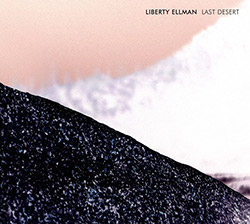
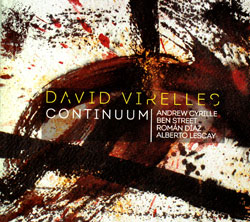
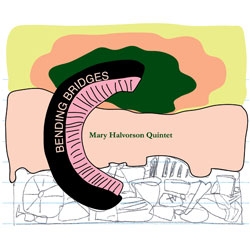
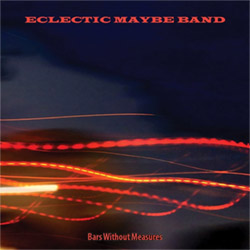



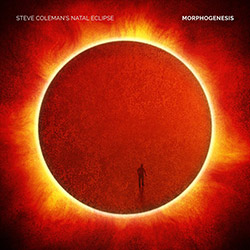




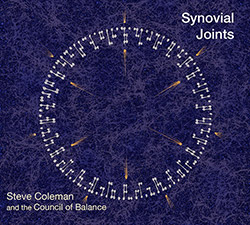


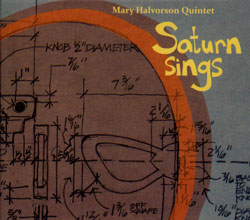



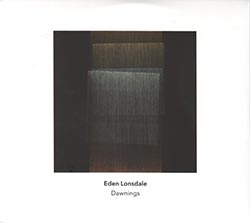



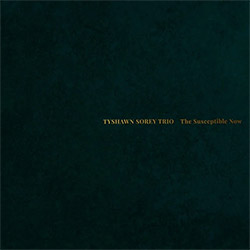



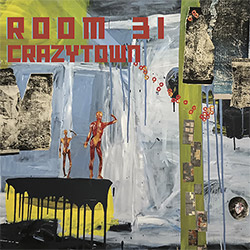
![Dunmall / Noble / Edwards / Sanders : Disappearing Worlds [MISPRINTED EDITION]](https://www.teuthida.com/productImages/misc4/35501.jpg)


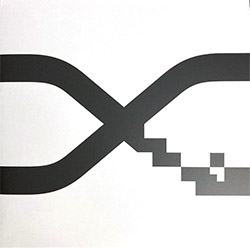
![Alva Noto: Xerrox Vol. 5 [VINYL 2 LPs]](https://www.teuthida.com/productImages/misc4/35359.jpg)

![Mezei, Szilard Tul A Tiszan Innen Ensemble: Reveszem [2 CDs]](https://www.teuthida.com/productImages/misc4/35499.jpg)


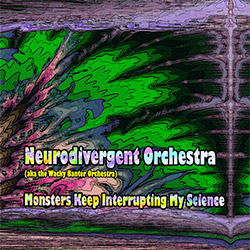




![Gush (Gustafsson / Sandell / Strid) + Guests: Gush 30 - Krakow 2018 [3 CD BOX SET]](https://www.teuthida.com/productImages/misc4/35526.jpg)




![Weston, Matt: Communism Has Appeared On The Scene [VINYL 2 LPs]](https://www.teuthida.com/productImages/misc4/35546.jpg)
![Sorey, Tyshawn (w/ Diehl / Ragahavan): The Susceptible Now [DOUBLE VINYL]](https://www.teuthida.com/productImages/misc4/35477.jpg)
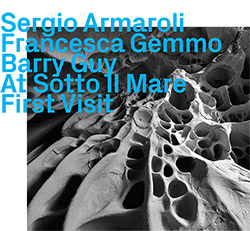
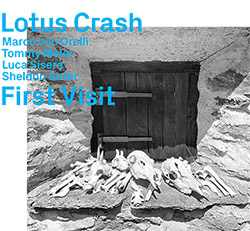
![Coltrane, John Quartet (w/ Tyner / Garrison / Jones): Impressions From Graz 1962, Revisited [2 CDs]](https://www.teuthida.com/productImages/misc4/35495.jpg)
![Guy, Barry / Ken Vandermark: Occasional Poems [2 CDs]](https://www.teuthida.com/productImages/misc4/34849.jpg)
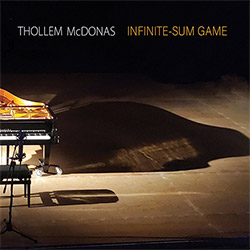
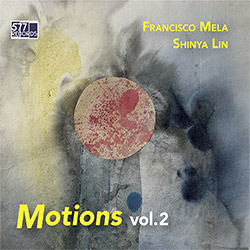
![Novoa / Carter / Mela Trio: Vol.1 [VINYL]](https://www.teuthida.com/productImages/misc4/35236.jpg)
![Evans, Peter (Evans / Eldh / Black): Extra [VINYL]](https://www.teuthida.com/productImages/misc4/35279.jpg)

![McPhee, Joe: Straight Up, Without Wings [BOOK]](https://www.teuthida.com/productImages/misc4/35454.jpg)




![Barker / Parker / Irabagon: Bakunawa [VINYL]](https://www.teuthida.com/productImages/misc4/35533.jpg)


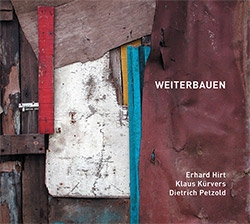


![Blaser, Samuel / Marc Ducret / Peter Bruun: Dark Was The Night, Cold Was The Ground [VINYL 10-inch]](https://www.teuthida.com/productImages/misc4/35492.jpg)

![Jeck, Philip: rpm [2 CDs]](https://www.teuthida.com/productImages/misc4/35455.jpg)


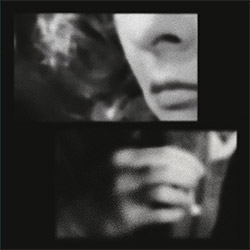
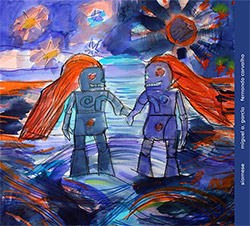


![DNS: Taking Big Bites Of The Khandas Three Cafes Deep [2 CDs]](https://www.teuthida.com/productImages/misc4/35334.jpg)


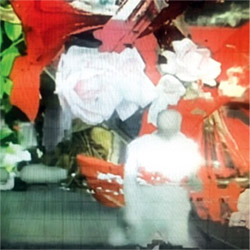

![Cleaver, Gerald: The Process [VINYL]](https://www.teuthida.com/productImages/misc4/34966.jpg)
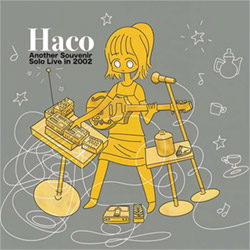


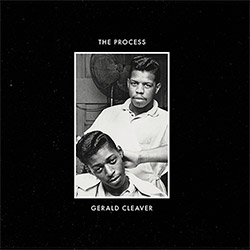
![Alva Noto: HYbr:ID II [VINYL 2 LPs]](https://www.teuthida.com/productImages/misc4/35201.jpg)

![Baron, Derek / Luke Martin: Distinct and Concealed [CASSETTE + DOWNLOAD]](https://www.teuthida.com/productImages/misc4/35079.jpg)
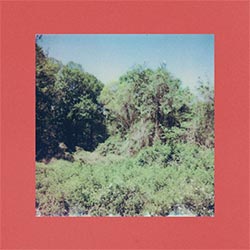
![Lyle, Erica Dawn : Colonial Motels [CASSETTE + DOWNLOAD]](https://www.teuthida.com/productImages/misc4/35080.jpg)







![Sanna, Claudio: Compositori Sardi Contemporanei II [2 CDs]](https://www.teuthida.com/productImages/misc4/35317.jpg)




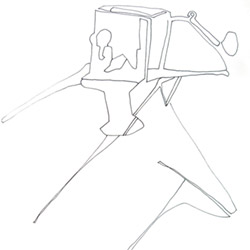


![Zurria, Manuel: Fame di Vento [3 CDs]](https://www.teuthida.com/productImages/misc4/35167.jpg)
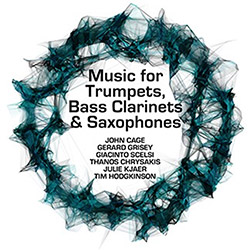
![Granberg, Magnus / Nattens Inbrott / Skogen: Holde Traume, Kehret Wieder! [2 CDs]](https://www.teuthida.com/productImages/misc4/35038.jpg)
![Frey, Jurg: Outermost Melodie [2 CDs]](https://www.teuthida.com/productImages/misc4/35039.jpg)

![Pavone, Jessica: Reverse Bloom [VINYL]](https://www.teuthida.com/productImages/misc4/34895.jpg)




![Modney (Modney / Wooley / Gentile / Roberts / Pluta / Symthe / ...): Ascending Primes [2 CDs]](https://www.teuthida.com/productImages/misc4/34852.jpg)



![Elephant9 : Mythical River [VINYL]](https://www.teuthida.com/productImages/misc4/34624.jpg)



![Elephant9 with Terje Rypdal: Catching Fire [VINYL 2 LPs]](https://www.teuthida.com/productImages/misc4/35355.jpg)
![Deerlady (Obomsawin, Mali / Magdalena Abrego): Greatest Hits [VINYL]](https://www.teuthida.com/productImages/misc4/34876.jpg)




![Haino, Keiji: Black Blues [2 CDs]](https://www.teuthida.com/productImages/misc4/35109.jpg)



![Surplus 1980: Illusion of Consistency [CD]](https://www.teuthida.com/productImages/misc4/35069.jpg)
![Staiano, Moe: Away Towards the Light [VINYL + DOWNLOAD]](https://www.teuthida.com/productImages/misc4/35037.jpg)



![Caveira (Gomes / Sousa / Abras / Ferrandini): Ficar Vivo [VINYL]](https://www.teuthida.com/productImages/misc4/34643.jpg)
![Gregg, J. J. / David Van Auken: Lunar Prairie [CD w/ DOWNLOAD]](https://www.teuthida.com/productImages/misc4/34611.jpg)
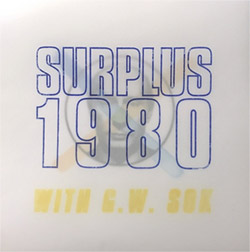
![Coultrain: Mundus [VINYL]](https://www.teuthida.com/productImages/misc4/32439.jpg)
![Mattin: Songbook #6 [VINYL]](https://www.teuthida.com/productImages/misc4/27317.jpg)
![Punkappella: Wake Up [7-inch VINYL]](https://www.teuthida.com/productImages/misc4/17519.jpg)
![Residents, The: WARNING: UNiNC.: Live And Experimental Recordings 1971-1972 [VINYL 2 LPs]](https://www.teuthida.com/productImages/misc4/31521.jpg)
![Coultrain: Phantasmagoria [VINYL]](https://www.teuthida.com/productImages/misc4/30142.jpg)
![Lennon, Sean Ono: Asterisms [VINYL]](https://www.teuthida.com/productImages/misc4/34517.jpg)
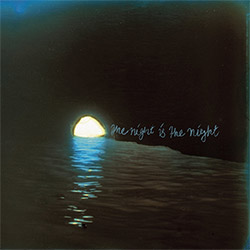
![Coley, Byron: Dating Tips for Touring Bands [VINYL]](https://www.teuthida.com/productImages/misc4/17906.jpg)

![Lost Kisses: My Life is Sad & Funny [DVD]](https://www.teuthida.com/productImages/misc4/lostKissesDVD.jpg)